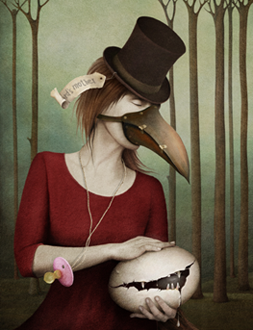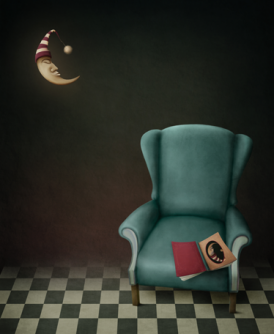Cultivating the Creative
“D” stands for dream and discover.
The roots of storytelling go back to the earliest light and heat of life, to the fires of the first people on earth. The first spoken stories sounded more like dreams than the stories we hear or read today. They were stories of how the world came to be, how plants and animals and stars and people were made, and how things of the world were destroyed and regenerated.
In those days, when human consciousness was still very young, there was less separation between things. Plants, animals, people, earth, stars, and everything in the universe were thought to be of the same essence. The events of waking and dreaming were understood to be of the same essence, and both realms were filled with mystery and wonder. Storyteller, stories, and audience were of the same essence. The stories belonged to all the people. The stories connected them to each other and made the community whole.
In those days there were no literary categories such as we have today. Poetry, drama, and fiction intermingled in a storytelling stew that involved, not only words, but also music, animal calls, feathers, food, smoke, masks, body paint. It involved drumming, singing, dancing, acting, chanting, praying, and many other mysterious ritual elements.
When you close your eyes and listen to an old tale and see the images in your mind and feel them in your body, you are participating in a very old dream. When you read a new story or poem and see the images in your mind and feel them in your body, you are taking part in the contemporary writer’s dream. When you sit down to write, and the images sift up to the surface from your deepest mind and truest sensations, you are experiencing and creating your writing dream. You are making the images you see in your mind and sensations you feel in your body visible and tangible to everyone who reads or hears your work.
Dreaming and writing are improvisational processes, in which images move, morph, and transform. Dreaming and writing are acts of surprise and discovery. We often don’t know where we’re going with a piece when we sit down to write. In both dreaming and writing, one image leads to another.
You can cultivate a receptive, dreamlike state for writing by creating your own rituals—lighting candles or a sage smudge, playing meditative music, breathing deeply, or writing for a few moments about your present experience, writing from your senses. You might also start by recalling a current dream; sit with it and feel it in your body, then use it as a starting point, writing whatever it inspires in you.
As you explore your dream symbols, you can use them both as a tool for transforming your life and as a means of consciously and creatively entering the richness of your imagery. Whenever you sit down to write, try to tap into the sensual and improvisational energy of your dreams to invent and discover.
What are your dreams made of? What are you discovering?



0 Comments